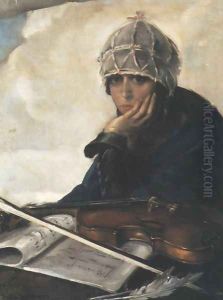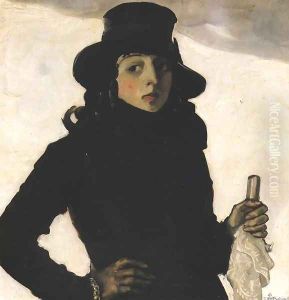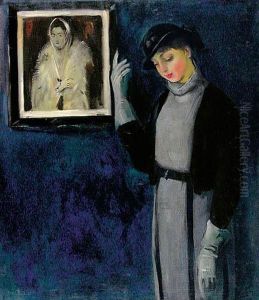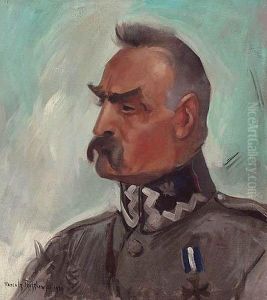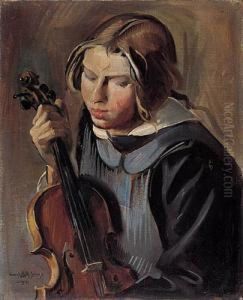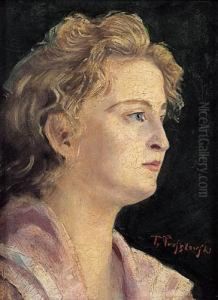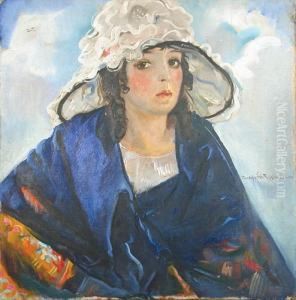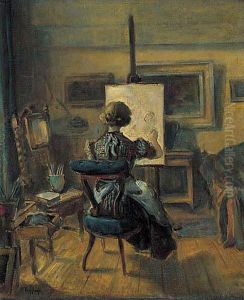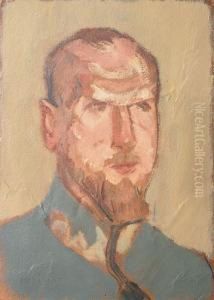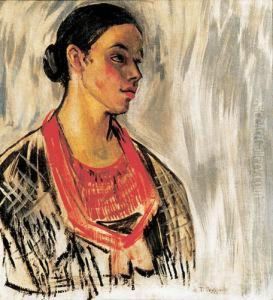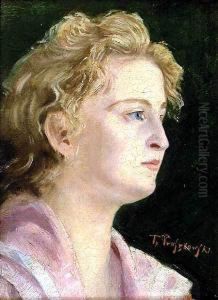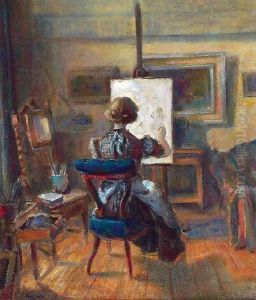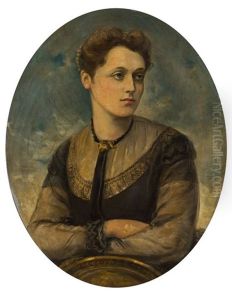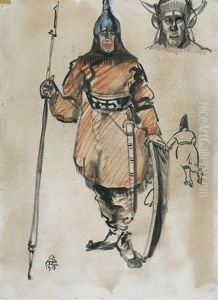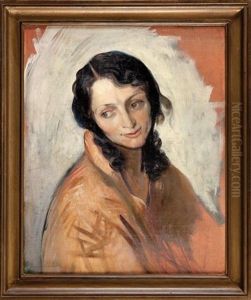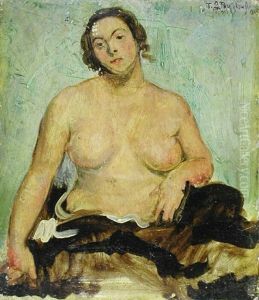Tadeusz Pruszkowski Paintings
Tadeusz Pruszkowski was a notable Polish painter and educator, born on April 15, 1888, in Borucice, Poland. He was a significant figure in Polish art between the two World Wars and is best known for his portraits and landscapes that showcase a blend of symbolist and expressionist styles.
Pruszkowski studied at the School of Fine Arts in Kraków under Józef Mehoffer and Stanisław Wyspiański, and later at the Academy of Fine Arts in Warsaw, where he was influenced by the works of the Young Poland movement. His early works were marked by a fascination with peasant life and folklore, which he depicted with a vivid sense of color and dynamic composition.
In 1912, Pruszkowski traveled to Paris, which was then the center of the art world. There, he was exposed to new art movements such as Fauvism and Cubism, which had a lasting influence on his approach to color and form. During World War I, he served in the Polish Legions, and his experiences from the war impacted the themes of his later works.
After the war, Pruszkowski became a professor at the Academy of Fine Arts in Warsaw, where he taught for many years. He was a beloved teacher and mentor to a generation of Polish artists, and he founded the so-called 'Pruszków School' or 'Group of Pruszków', which was a community of artists who gathered around him and shared his artistic vision.
Pruszkowski's work during the interwar period included a series of portraits of the Polish intelligentsia, which are considered some of his finest works. His portrait subjects often included his friends and colleagues from the artistic and literary circles. Pruszkowski also continued to paint landscapes, which captured the mood and atmosphere of the Polish countryside.
During World War II, Pruszkowski remained in Nazi-occupied Poland. He continued to paint and teach, although under increasingly difficult circumstances. Tragically, he was arrested by the Gestapo and died on May 21, 1942, in Palmiry, near Warsaw, a site known for mass executions during the war.
Tadeusz Pruszkowski left behind an artistic legacy that is remembered for its emotional depth and its contribution to the development of modern Polish art. His paintings are held in many collections, both in Poland and internationally, and his influence as a teacher is seen in the works of his many distinguished students.
